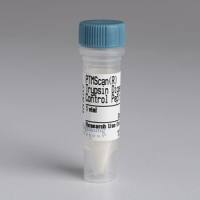Formation of Pit-Spanning Phospholipid Bilayers on Nanostructured Silicon Dioxide Surfaces for Studying Biological Membrane Events
互联网
507
Zwitterionic phospholipid vesicles are known to adsorb and ultimately rupture on flat silicon dioxide (SiO2 ) surfaces to form supported lipid bilayers. Surface topography, however, alters the kinetics and mechanistic details of vesicles adsorption, which under certain conditions may be exploited to form a suspended bilayer. Here we describe the use of nanostructured SiO2 surfaces prepared by the colloidal lithography technique to scrutinize the formation of suspended 1-palmitoyl-2-oleoyl-sn -glycero-3-phosphocholine (POPC) lipid bilayers from a solution of small unilamellar lipid vesicles (SUVs ). Atomic force microscopy (AFM) and quartz crystal microbalance with dissipation monitoring (QCM-D) were employed to characterize nanostructure fabrication and lipid bilayer assembly on the surface.






![(3R,5R)-3-butyl-3-ethyl-7,8-dimethoxy-5-phenyl-4,5-dihydro-2H-benzo[f][1,4]thiazepine 1,1-dioxide,Moligand™,阿拉丁](https://img1.dxycdn.com/p/s14/2024/0619/722/0483842343985733081.jpg!wh200)


